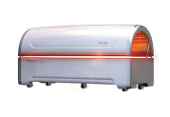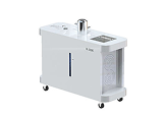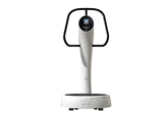Reference
Related Papers - Brain
Brain- Hyperbaric Oxygen Therapy Improves Parkinson’s Disease
Hyperbaric Oxygen Therapy Improves Parkinson’s Disease by Promoting Mitochondrial Biogenesis via the SIRT-1/PGC-1α Pathway
What Did They Discover?
In a toxin-induced Parkinson’s model, HBOT preserved tyrosine hydroxylase–positive dopaminergic neurons in the substantia nigra and improved movement tests (distance, speed, grip, rotarod). Cellular assays showed longer neurites and healthier morphology, indicating functional rescue beyond lab markers.
How Does It Work?
HBOT upregulated SIRT-1, PGC-1α, and TFAM—keys that “switch on” mitochondrial production—along with VDAC, signaling more and better power plants inside neurons. In parallel, it reduced NF-κB–driven inflammatory proteins (COX-2, iNOS, TNF-α) and limited apoptosis markers (Bax/Bcl-2 ratio, cytochrome c, cleaved caspase-3).
Why Does It Matter?
Parkinson’s symptoms track closely with mitochondrial failure and neuroinflammation; HBOT targets both levers at once. By rebuilding energy capacity and quieting toxic signals, it supports the circuits that govern movement—like fixing the engine and the wiring together.
Key Mechanisms
Deep-sleep PBM amplifies glymphatic flow
Light boosts NO and blood circulation
Amyloid-beta clearance and neuron protection
Conclusion
HBOT rebuilds neuronal energy and calms damaging signals, translating into clearer motor gains.
Photobiomodulation Treatment Device
Hyperbaric Oxygen Chamber
Hydrogen Inhalation Machine
Nano-bubble Hydrogen
Water Generator
Whole Body Wave
Motion Exercise Device
Nitro Biome
BAHI Longevity
Product Background
References
Customer Center
Get In Touch
- Haan-ro, Gwangmyeong-si, Gyeonggi-do, Republic of Korea
- +82)2-898-2116
- info@huelight.kr
Copyright 2025 © Hue Light Co., Ltd. All rights reserved.
Disclaimer: The medical papers and academic information provided on this site are intended for educational purposes only and are not meant to
diagnose, treat, prevent diseases, or substitute for a doctor’s advice.
Photobiomodulation Treatment Device
Hyperbaric Oxygen Chamber
Hydrogen Inhalation Machine
Nano-bubble Hydrogen
Water Generator
Whole Body Wave
Motion Exercise Device
Nitro Biome
BAHI Longevity
Product Background
References
Customer Center
Get In Touch
- Haan-ro, Gwangmyeong-si, Gyeonggi-do, Republic of Korea
- +82)2-898-2116
- info@huelight.kr
Copyright 2025 © Hue Light Co., Ltd. All rights reserved.
Disclaimer: The medical papers and academic information provided on this site are intended for educational purposes only and are not meant to
diagnose, treat, prevent diseases, or substitute for a doctor’s advice.





